Bonjour, you. If you’re new to The Onion Papers, Peels are a round-up feature at TOP, a writer’s almanac that comes out on the first Monday of each month. Happy reading and clicking,
Margaux
February was red. Red curries, ragù, pappa al pomodoro; Louise Bourgeois’ fleurs du mal pinned by my desk, roses for February; insomniac’s red eyes, red tears; anger, roaring in red at a fascist’s red lie; red bricks against the sun rising and the slide in the playground around the corner was painted in red. Reminder that a routine is only helpful for as long as it illuminates a day; red light if it frustrates. Red stamps in a room filled with strangers who gathered for a letter writing workshop at the library on a Tuesday evening – red for tenderness, humanity dresses in red. As red as the neck of the kingfisher who has seen us neighbours through winter, nesting by the river. Blood oranges in the kitchen, blood inside test tubes; orange skies as the days burst earlier and stretch further and longer, overnight freeze and windy afternoons, a yellow makeover for the fields. Daffodils point their nose out, their stems flexible enough not to snap under the gale, but not as long as Pinocchio’s nose – nature doesn’t deceive, it is wholesome or it is absent, and it is cyclic. Abundant green before the bluebells will carpet the parks; turning the soil in the garden, I am met with more treasures from the past, earthworms if nothing else; sowing garlic and onions, leaving 30 cm between each; it is starting to smell like spring indeed.
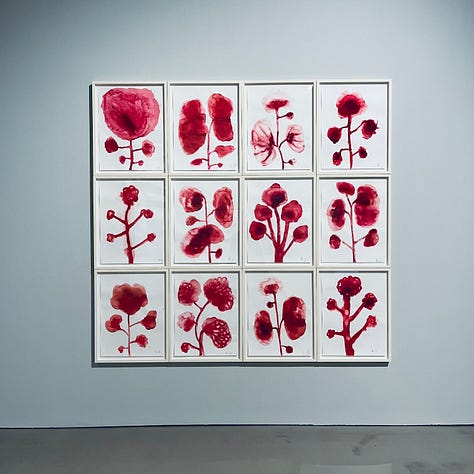

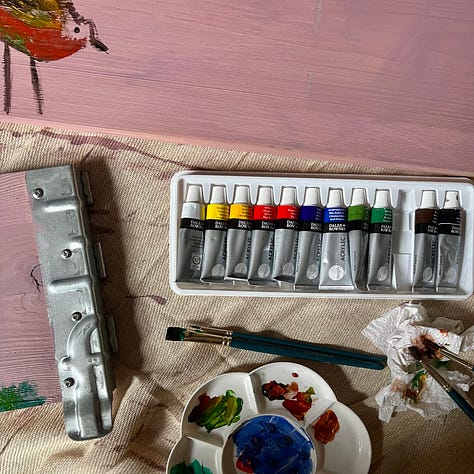
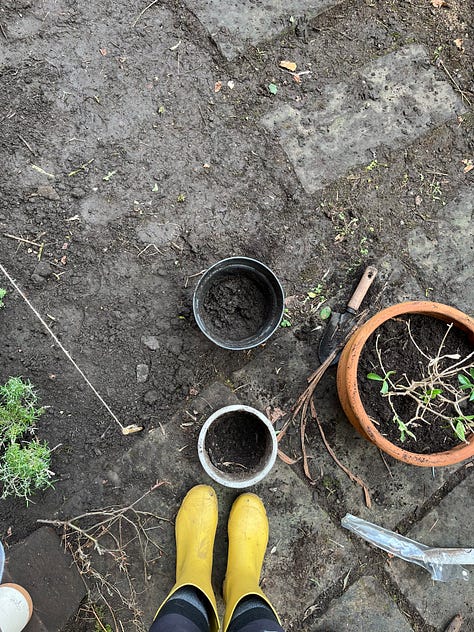
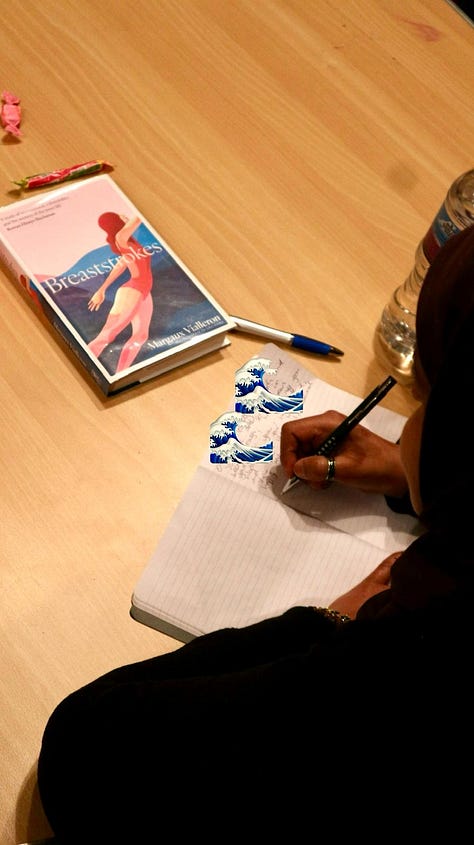




bread update
More schiacciata (recipe available in the January peels), a new (pleasing) eight grains flour for the sourdough bread and an experiment with corn flour:
11:00 levain: in a bowl, mix 60g of sourdough starter with 60g of lukewarm water, as well as 60g of white flour. Cover with a kitchen towel and let it rise.
15:00 bread mixture: levain, 200g of spelt flour, 100g of white flour, 150g of corn flour and 250g of lukewarm water. Mix and knead with your hands. It must get messy at this stage; be grateful for the teachings of the bread, always. Keep kneading. Rest.
Carry three more rounds of kneading, with one hour to one hour and a half break in between. Form a ball with the dough, cover with a kitchen towel and store it in the fridge for an overnight proof.
06:00 bake: in a cast iron casserole, lid on, for 30 minutes at 220C, then for 15 minutes at 200C, lid removed.
Next month, I am keen to try this Sourdough Boston Brown Bread, via Wordloaf.
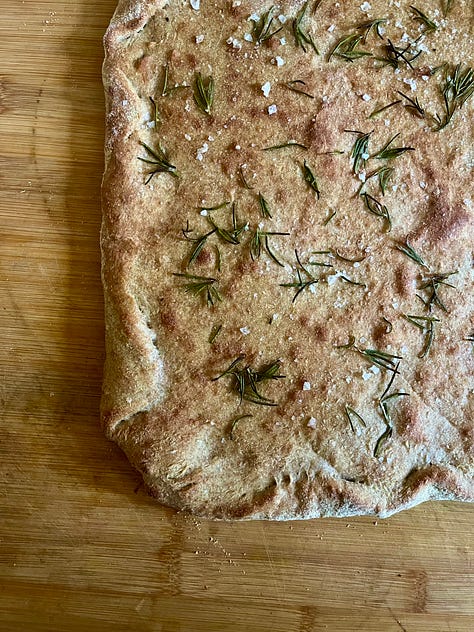
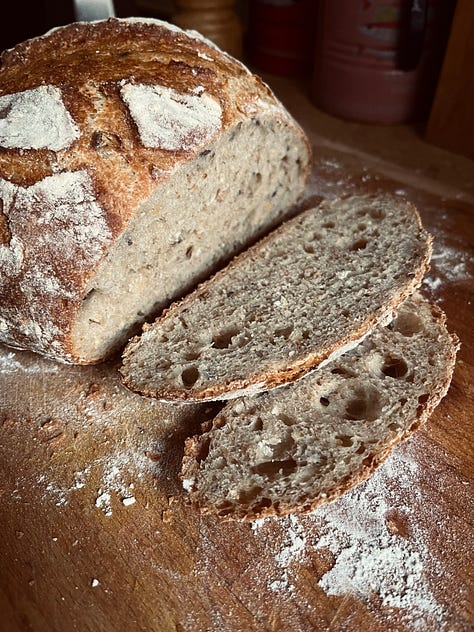

reading, listening
I find gardening intimidating. If you do too, I recommend listening to Alice Vincent’s Why Women Grow, while giving it a go. Turns out, the first handful of soil is the hardest one to lift; as often, do I dare say? Vincent went to meet women who work the soil, plant seeds, nurture gardens in various places and contexts, unravelling moving insights about why women garden.
Still in the garden or walking around public gardens, I listened to Charles Dickens’ Tales of Two Cities. I have been thinking about historical fiction a lot recently – if and how it serves the present – so I embarked on a second, magnificent journey with Wolf Hall by Hilary Mantel. Without breaking any new grounds, I recommend.
‘The fate of peoples is made like this, two men in small rooms. Forget the coronations, the conclaves of cardinals, the pomp and processions. This is how the world changes: a counter pushed across a table, a pen stroke that alters the force of a phrase, a woman's sigh as she passes and leaves on the air a trail of orange flower or rose water; her hand pulling close the bed curtain, the discreet sigh of flesh against flesh.’ — Wolf Hall, Hilary Mantel
On the page, I inhaled The Corner That Held Them by Sylvia Townsend Warner. It was my first Warner and, I am told, her other novels are radically different as Warner only wrote for her ‘enjoyment’. As much transpires through her prose as this is one of the smartest and wittiest novels I have read in a long time. Set in a convent in medieval Norfolk, The Corner That Held Them follow nuns through three centuries of floods, sickness and other life rivalries.
In February, I was a proud friend as I got to meet one of my favourite dinner pals, the brilliant Heather Parry, on the page with the publication of her new book: Carrion Crow. Marguerite Périgord is locked in the attic of her family home with a sewing machine and Mrs Beeton’s Book of Household Management. And j’adore! It gave me Poor Things vibes; it is deliciously gross, smelly and hungry.
in the kitchen
May I recommend folding pasta sheets, sealing each parcel to a close, cooking them, so ravioli can be broken for dinner and reveal a surprise once withheld? Tinned crab and mozzarella for the filling; tinned white asparagus (one half blended and the other half left whole), parsley and leek for the sauce.
/
Lightly toast the orzo, with one teaspoon of each nigella seeds and paprika. Parsley, leek, courgettes, swirl. One can of chopped tomatoes and one teaspoon of rose harissa. Swirl, simmer. Enough fish broth is necessary to complete the cooking.
White fish, any from the freezer, should be cubed then rubbed in corn flour and sumac. Pan fried, it will dress the orzo above brilliantly.
/
Carrots (grated) for the cake, with vanilla and semolina; aniseeds, nigella seeds; coconut cream and desiccated coconuts too.
/
And a squeeze of blood orange in the porridge. Cool on heat. Salty pistachio for contradiction, a crunch, wake up.
/
Rainbow chard, peas and green lentils as the soup must be hearty. It is too early to let go of winter’s layers.
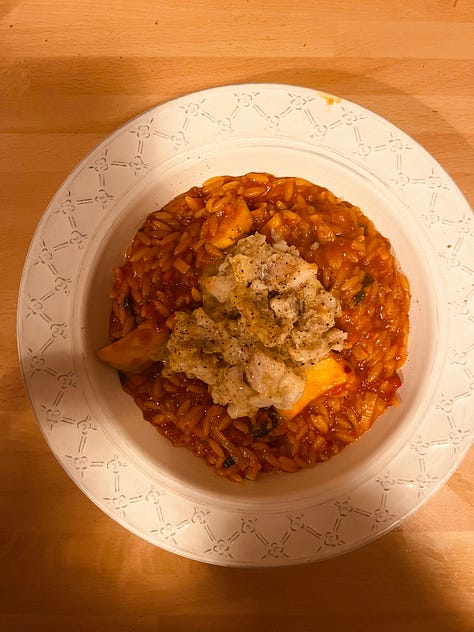
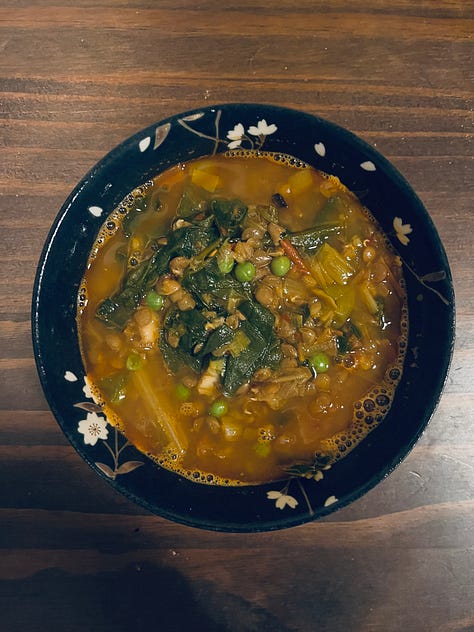
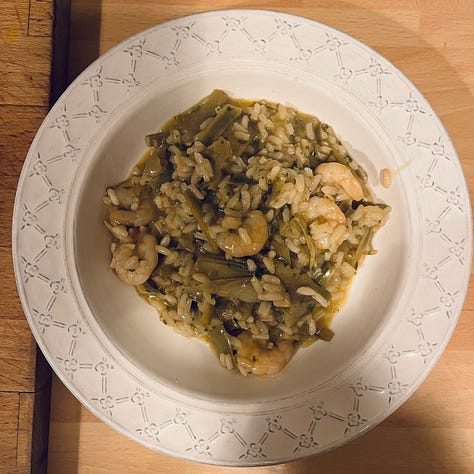
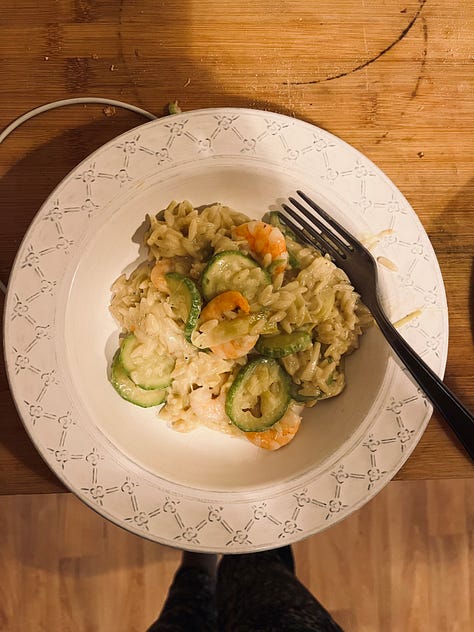
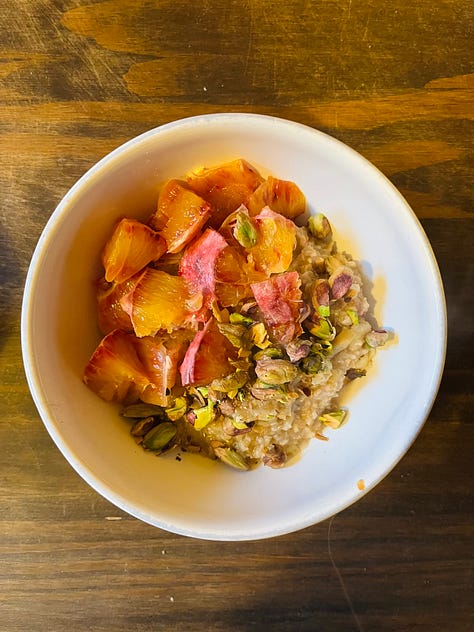
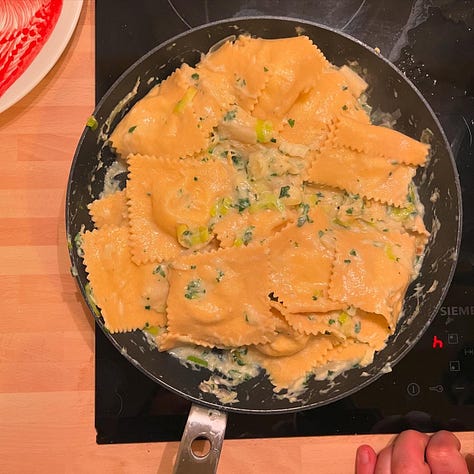
from The Onion Papers
I was honoured to share a collective newsletter, featuring eleven writers and artists who answered the same prompt: what would you cook for your younger self?*
*Since one of you asked, this dispatch wasn’t influenced by the online trend to ask your younger self for coffee, which I wasn’t aware of. It was an introvert’s book launch celebration for my novel as, I am afraid, this newsletter (e.g. the author) remains unpopular and a committed introvert.
/
How to Trim an Artichoke and other notes on untransparent immune systems and recipes; thoughts on undoing the body. It is all in the newsletter, including a recipe for an artichoke and prawns risotto.
looking ahead, Glasgow (GMT)
March stands for the moon. This one is for the night’s romantics as most planets will be lost from sight and the sky be dark, as dark as within, where our true spirits rise. ‘These places of possibilities within ourselves are dark’ as Audre Lorde reminds us in Poetry is Not a Luxury, ‘because they are ancient and hidden; they have survived and grown strong through that darkness.’ Look, the nocturnal tawny owls will have had their first clutch of eggs by the end of the month, and the moon will be full in Virgo on the 14th day of March. Called the Plough Moon, it will be the last one before the spring equinox. This one is grounding; it will be twinned with an eclipse, total as well, as Earth will slide between the sun and the moon. If a new season is brewing, as indecisive as a teenager, ends must be met before spring can bloom with confidence. Grilled purple sprouting broccoli, chopped almonds, with a drizzle of tahini and lemon on top; cold beetroot soup, roasted beetroot salad; blood orange semifreddo for dessert; a brisk walk, followed by a wild garlic tart. It is an excellent time to faff between moods and places, to give something new a shot or burry and old project. Nothing has to be forever. It is a fine state to be distracted, unclear, curious; be amazed, disappointed, open to change. For anything to be cast anew, a spell must be broken.
margaux
PS. I have been collecting these peels for a full year(!), as the first entry was for February’s peels too. I hope they are enjoyable emails to receive as I’m certainly having fun writing them.
thank you for reading. i’m margaux, a writer and cook, and this is my hybrid newsletter. you can subscribe and come back for seconds (thursdays are for long reads and mondays for annotated recipes, both come out every other weeks) <3







